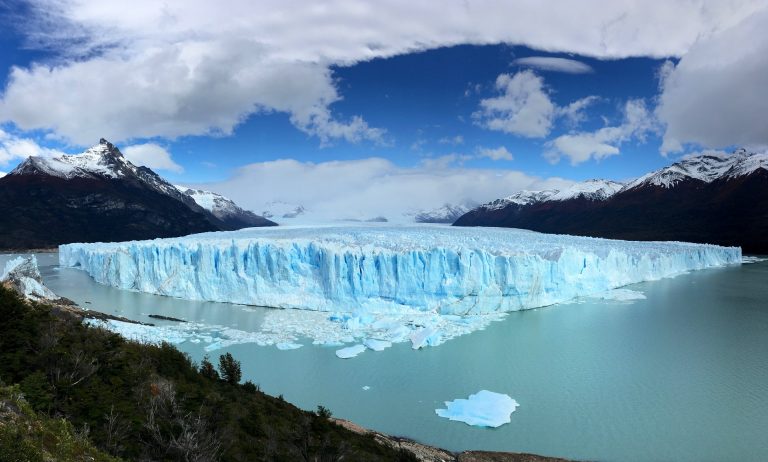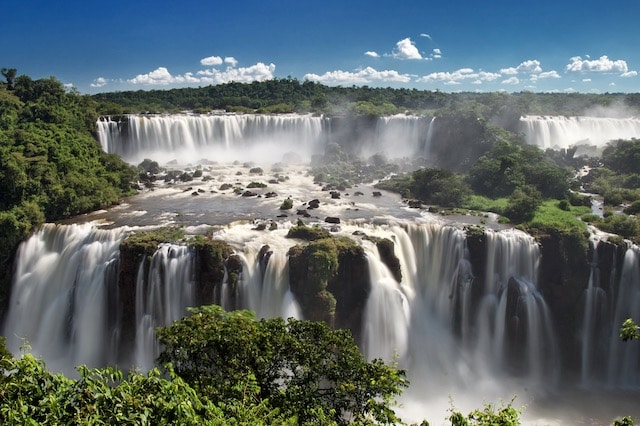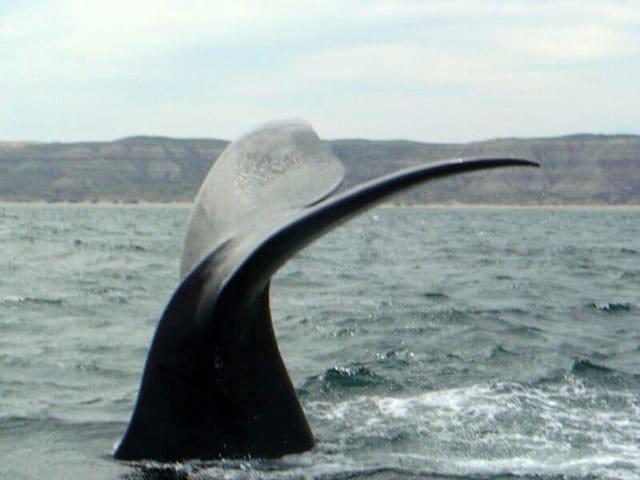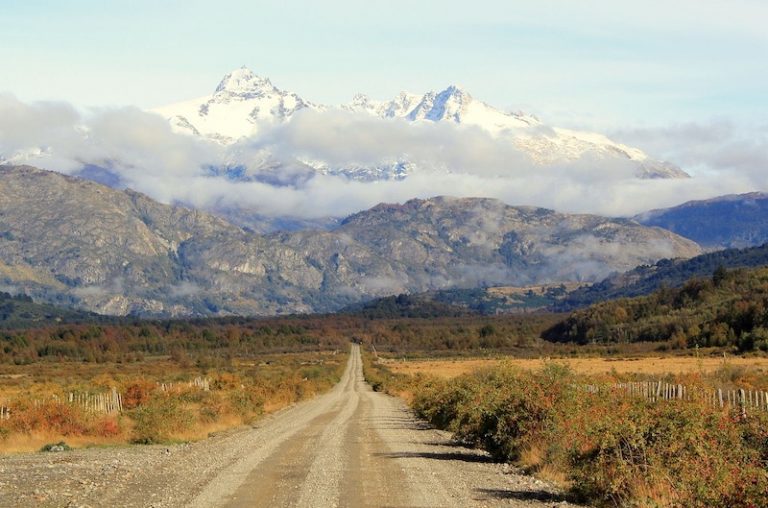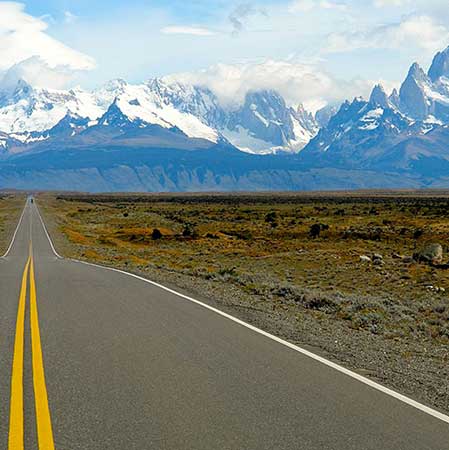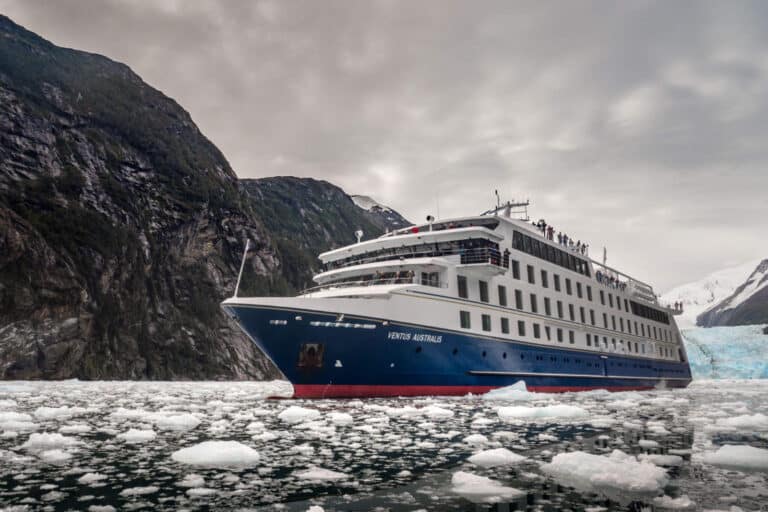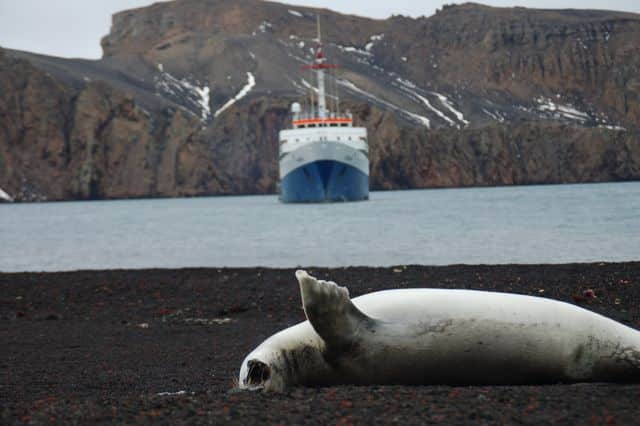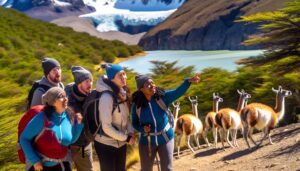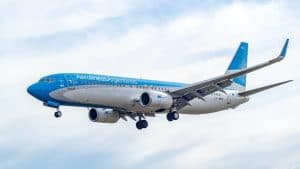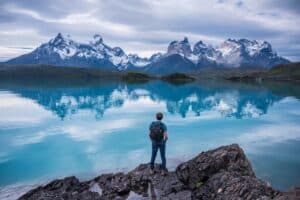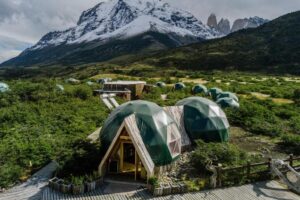Patagonia, a region shared by Argentina and Chile, is a paradise for nature lovers and adventure seekers. From towering peaks and majestic glaciers in Argentine Patagonia to turquoise lakes and rugged coastline in Chilean Patagonia, this area offers a plethora of outdoor activities and breathtaking scenery.
However, planning a trip to this remote region can be a bit daunting, especially when it comes to budgeting. In this article, we’ll break down the cost of a trip to Patagonia so you can plan your dream vacation without breaking the bank.
In general trip to Patagonia is not a cheap trip since you will need to take at least 4 to 6 flights between the international flight that will leave you in Buenos Aires or Santiago de Chile and your domestic flights.
You will need a budget for flights of between €1,500 and €2,000. In addition, you must add your ground services, hotels, transfers and excursions multiplied by the number of days you want to be away.
Of course it will depend on the type of accommodation you choose, central hotels from 3 to 5 stars or more remote country stays.
In general, a budget of €3,000 or more is needed to make a trip to Patagonia.
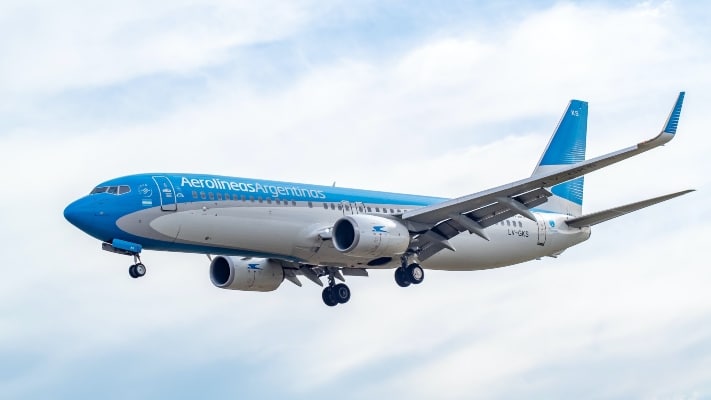
Planning a trip to Patagonia? Wondering how much it will cost you? Read on to find out everything you need to know about the cost of a trip to Patagonia.
Table of Contents
How are the Prices in Patagonia
As Patagonia is historically a destination for international tourism, its prices are governed by the dollar.
Tourist prices on your Patagonia trip are completely disconnected from the local Argentine economy and are usually equal to the world tourism standard.
What Patagonia budget do I need for day to day expenses?
Apart from the services that you already have contracted, it is recommended to calculate a budget of between 10 and 25 dollars; per day per person.
Eating in Argentina is cheap and its gastronomy is of great quality. It is highly recommended to visit good restaurants during your trip. It’s worth it.

The value for money is much better than in Europe on USA.
How much does transportation cost?
Getting to Patagonia can be expensive, but there are several options to choose from. Here’s an overview of the transportation costs you should consider when planning your trip:
- Flights costs: Round-trip flights from the US to Patagonia can cost anywhere from $800 to $1500, depending on the time of year and the airline. Domestic flights within Argentina or Chile can cost anywhere from $100 to $250.
- Buses: Taking a bus is a cheaper option, but it can be time-consuming. A one-way bus ticket from Buenos Aires to Bariloche, for example, costs around $50.
- Rental Car: If you’re planning to explore Patagonia extensively, considering a car rental is advisable. The cost and availability of rental cars can vary, with prices generally ranging from $70-150 per day. To find the best deals on car rentals, it’s essential to compare prices across different rental companies and look for special offers. Additionally, understanding the insurance details and policies can help avoid unexpected costs, making your travel experience smoother and more enjoyable.
How much does accommodation cost?
Accommodation in Patagonia ranges from basic camping sites to luxury lodges. Here’s what you can expect to pay for different types of accommodation costs:
- Cheap Accommodation: Hostels are a popular option for budget travelers, with prices ranging from $10 to $30 per night.
- Hotels: Mid-range hotels can cost anywhere from $60 to $150 per night, while luxury hotels can cost upwards of $300 per night.
- Camping: If you’re an outdoor enthusiast, camping is a great way to save money. Most campsites charge around $10 to $20 per night.
- Refugios: Refugios are mountain lodges that offer bunk beds or private rooms. Prices vary depending on the location, but expect to pay around $50 to $100 per night.
There are plenty of top-notch hotels in the region, ranging from luxurious resorts to cozy bed and breakfasts.
To help you choose the best option for your needs and budget, there are several articles available online that compile lists of the best hotels in the most important cities of Patagonia, including Bariloche, El Calafate, Ushuaia, and Puerto Natales.
These articles typically provide detailed information about each hotel, including amenities, room rates, and reviews from previous guests, making it easier to find the perfect accommodation for your Patagonian adventure.
- Best hotels in Bariloche
- Where to stay in El Calafate
- Best hotels in Ushuaia
- Best Hotels in Puerto Madryn
- Best hotels near Iguazu Falls
How much does food cost?
Food in Patagonia can be expensive, especially if you’re eating out every meal. Here’s what you can expect to pay for food:
- Restaurants: A meal at a mid-range restaurant can cost anywhere from $15 to $30 per person. Fine dining restaurants can cost upwards of $50 per person.
- Supermarkets: If you’re on a tight patagonia budget, consider buying groceries and cooking your own meals. A week’s worth of groceries can cost around $50 to $100, depending on your preferences.
- Street food: Street food is a great option for budget travelers. Empanadas, for example, cost around $2 each.
How much do outdoor activities in Torres del Paine National Park cost?
Patagonia is known for its outdoor activities, from hiking and kayaking to skiing and horseback riding. Here’s what you can expect to pay for different activities:
- Hiking: Most national parks, including the renowned Torres del Paine National Park, charge an entrance fee of around $10 to $20. Guided hikes, especially popular ones like the W hike in Torres del Paine National, can cost anywhere from $50 to $100 per person.
- Kayaking:
Kayaking is a popular activity in Patagonia, and prices vary depending on the location and the length of the trip. Expect to pay around $50 to $100 per person for a half-day or full-day trip.
- Skiing: Skiing in Patagonia can be expensive, with lift tickets ranging from $50 to $100 per day.
- Horseback riding: Horseback riding is a unique way to explore Patagonia’s stunning landscapes. Prices vary depending on the location and the length of the ride, but expect to pay around $50 to $100 per person.
Costs in Chilean Patagonia vs Argentine Patagonia
If you’re planning a trip to South America, visiting Patagonia in Chile is a must-see destination.
This vast region offers stunning landscapes, including towering mountains, glaciers, and crystal-clear lakes. A Patagonia trip is not complete without visiting one of the many national parks in the area, such as Torres del Paine, which is known for its rugged terrain and abundant wildlife. When it comes to food costs, expect to pay a premium in popular tourist destinations such as Punta Arenas. However, the vast majority of visitors choose the summer months for their visit, drawn by the allure of Patagonia’s natural beauty despite the region’s unpredictable climate and infamous winds.
However, there are plenty of affordable options available if you’re willing to explore smaller towns and local eateries. No matter your budget, a trip to Patagonia is sure to be a memorable experience that will leave you in awe of the natural beauty that South America has to offer. For travelers coming from the west coast of the U.S., it’s important to note that reaching Patagonia requires two full days of travel, highlighting the need for thorough logistical planning.
It’s worth noting that Patagonia Chile can be more expensive than Patagonia Argentina, due to factors such as currency exchange rates and higher taxes on goods and services. However, even with the added expenses, a Patagonia trip is well worth the investment for the stunning scenery and unique experiences that the region has to offer.
By carefully planning your itinerary and budgeting for expenses such as food costs and accommodation, you can still enjoy all that Patagonia has to offer without breaking the bank.
Other expenses to consider
In addition to transportation, accommodation, food, and outdoor activities, there are a few other expenses to consider when planning your trip to Patagonia. Here are a few examples:
- Travel insurance: Travel insurance is highly recommended, especially if you’re planning to engage in outdoor activities. Prices vary depending on the coverage, but expect to pay around $50 to $100 for a week-long trip.
- Tips: Tipping is not mandatory in Patagonia, but it is customary to tip your tour guides, hotel staff, and restaurant servers. A tip of 10% is considered generous.
So.. How Much is a Trip to Patagonia
Planning a trip to Patagonia involves various costs, including flight expenses, transportation within the region, accommodations, and park fees. This adventure to the remote landscapes of southern Argentina and Chile promises breathtaking views and unparalleled experiences, with key destinations like Torres del Paine, Los Glaciares National Park, Punta Arenas, Puerto Natales, and El Calafate.
Starting with flight costs, securing a round trip ticket to Patagonia is the first step. Prices vary greatly, so it’s beneficial to look for cheap flights and be flexible with travel dates. The financial aspect of your trip may also be influenced by the official exchange rate and the blue dollar rate in Argentina, affecting your overall expenses.
Upon arrival, navigating the vast distances between the attractions of Southern Patagonia requires additional transportation. Renting a car provides the freedom to explore at your pace, though it’s necessary to account for rental and fuel costs. Alternatively, local buses offer a more budget-friendly option, though they might limit access to certain remote areas.
Accommodations range from budget hostels to upscale lodges in Patagonia. Booking early is advisable to secure the best rates and availability. Moreover, exploring national parks like Torres del Paine and Los Glaciares incurs park fees, essential for the conservation of these pristine environments.
A basic budget for a Patagonia trip should include the cost of a round trip ticket, in-region transportation, accommodation, daily meals, park fees, and any additional tours or activities. While expenses can be minimized by choosing cheaper flights and accommodations, the experience of exploring the majestic landscapes of Patagonia is invaluable.
In conclusion, while planning a trip to Patagonia requires careful budgeting and consideration of various expenses, the reward is an unforgettable adventure in one of the world’s most pristine natural environments.
In general, a budget of €3,000 or more is necessary to fully experience what Patagonia has to offer, from its towering mountains and glaciers to its vast, remote wildernesses.
A Cost-Saving Tip for Your Patagonia Adventure
Travel groups can often be large and impersonal, and while they may offer some cost benefits, a tailor-made trip can provide a more authentic and potentially more cost-effective experience. By contracting directly with agencies in Argentina, you’re able to customize your journey to Patagonia, ensuring that you’re only paying for the experiences you truly want. This approach not only allows for a more personal and authentic adventure but also supports local businesses directly
FAQ
How much should I budget for a two-week trip to Patagonia?
A two-week trip to Patagonia can cost anywhere from $2500 to $5000, depending on your travel style and the activities you choose to do.
Is it cheaper to travel to Patagonia during the low season?
No, traveling to Patagonia during the low season (April to October) is not cheaper, as prices for flights, accommodation, and outdoor activities remain the same due to Argentina being an all year high season destination.
Are there any free activities to do in Patagonia?
Yes, there are plenty of free activities to do in Patagonia, such as hiking, visiting national parks, and exploring small towns.
Is Patagonia expensive to Visit ?
The cost of visiting Patagonia depends on three main factors: the price of your international airfare, your choice between renting a car or traveling by bus, and the category of hotel you prefer. Airfare can significantly impact your budget, while choosing to rent a car offers flexibility at a higher cost compared to budget-friendly bus travel. Lastly, accommodation options range from budget hostels to luxury lodges, affecting your overall expenses. Planning with these factors in mind allows for a tailored trip that meets your budget.
My organised trips to Patagonia
In the carousel below you can see already assembled itineraries for inspiration, click on the one you are interested in and ask me for a quote.
Compact trip through the southernmost Argentinean Patagonia: Ushuaia and El Calafate
Enjoy the 3 most relevant ecosystems in Argentina: The End of the World, The Glaciers and the Iguazu Falls.
Trip to Patagonia Argentina in 7 days touring the most beautiful landscapes of Patagonia Argentina (Peninsula Valdés & El Calafate)
The Carretera Austral by rental car is probably one of the most spectacular routes in Patagonia, designed to be travelled with plenty of time in your rental car.
Tour along Route 40 in Patagonia, starting on Route 3 on the Atlantic coast and continuing along Route 40 until reaching the Andes Mountains and El Calafate.
The Australis Cruises are Expedition Cruises that sail through the Strait of Magellan and the Beagle Channel, exploring one of the most beautiful and unspoiled regions of the world such as Patagonia and Tierra del Fuego.
The Antarctic Cruise aboard the MV USHUAIA offers you an incredible introduction to the 'White Continent' at a reasonable price.



